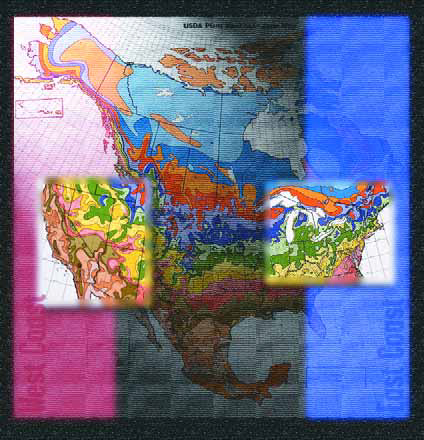site specific
Everywhere you turn these days, you see watershapers tackling projects that would have been unthinkable even a few years ago. It wasn't that long ago that simply raising a spa seemed like a big challenge, but these days vanishing edges, perimeter overflows and other ambitious details have become relatively common. And it's not just technology: Watershapers are gravitating toward great materials, colors, hardscape, plants and amenities - signs of real growth and, for the most part, a very good thing. With this broadening list of possibilities, however, have come some growing pains. The industry's like a teenager with
It's a rare project in which a watershaper has the opportunity to execute a complete design without compromise. In our Scottsdale, Ariz.-based business, we often work with upscale clients on custom pool and spa installations, and it seems that there's always some element or other in the design that ends up being altered or left out. It sometimes reaches the point where we start to feel as though the result, although it may be satisfying to the client, is not fully reflective of our talent, our vision or our best effort. The project pictured in these pages, however, is a dramatic exception to that rule. Although the clients were involved with general suggestions during the design process and construction project, when it came down to details of the plan, they let us go ahead and create an environment that fully reflected our creative vision. They'd seen one of our projects in a local "Street of Dreams" program in which area contractors were selected to build spec homes on the same street in a town just north of Scottdale called Troon. Once the row of home was completed, there were tours, awards and lots of media coverage - quite the high-profile affair. The clients had been in contact with four or five different pool builders in the area, but they'd
So often, design comes down to an ability to see patterns. I first learned this from my mother, a dressmaker who had an uncanny ability to look at garments for which there were no sewing patterns and then sit down and make them from scratch. I seem to have inherited this talent, taking in a barren landscape and quickly visualizing how it will look with plants, rocks and water. For this, I am happily in her debt. Not everyone comes across such a gift by birth, but I believe that the ability to visualize is something most any watershaper can develop through experience and by taking the time to learn the "language" of any
My daughter and I just returned from our annual trip to visit family in Connecticut and used the occasion this time to travel all over the northeast - from Boothbay Harbor, Portland and Camden in Maine to Martha's Vineyard and Nantucket and other parts of Massachusetts as well as slices of New Hampshire and Rhode Island. I'm never disappointed by the beauty I find in that part of the country. The landscapes are much lusher than they are at home in southern California, a fact that drives home the point that I spend most of my time in a desert. The old-growth trees back east are
I'm steadily reminded of one key point: No matter how talented any one of us might be, the work ultimately is not about us. For intensely creative people equipped with the necessary measures of self-confidence and ego, that point can be tough to accept and absorb, but it's true: For all our skills, we nonetheless work with our clients' visions, and the reality is that creating sympathetic designs for them takes time, patience and lots of effort. As a result, I'm passionate about uncovering what my clients are truly after in their garden and watershape designs. It's an investment of time and energy at the onset of the relationship that always
When I first walked the four acres of wooded ravines of what would later be christened "The Garden of Wind and Pine" at the heart of the Garvan Woodland Gardens in Hot Springs, Ark., I was both delighted and daunted by the experience. The delight came in the site's sublime natural beauty, which reminded me of tromping through the woods as a child - an activity I enjoy to this day. As for my sense of unease, I don't know which was more significant: the expansiveness of the dry drainage ravines that were to be converted to ever-varying cascades and streams, or the omnipresence of ticks and poison ivy. When I made my first visit in the fall of 1999, the site was part of an undeveloped 210-acre woodland parcel on the shore of Lake Hamilton given to the Department of Landscape Architecture at the University of Arkansas in Fayetteville by Verna Garvan. She had long seen the peninsula as the ideal setting for a botanical garden and had spent two decades developing her vision, planting camellias and azaleas and a rose garden and commissioning a pavilion by the architect Fay Jones and his partner, Maurice Jennings. I had worked in Fayetteville before, crafting a
Water moving in all sorts of different directions (but always in controlled ways) is a hallmark of one our favorite designers, architect David Tardiff. We've built the watershapes for many of his projects, and we've particularly enjoyed those that put both his vigor and special subtlety on display. Time and again, his designs have challenged us technically while rewarding our clients with results that always seem to leave them proud, amazed and thoroughly satisfied. As we've discussed in our previous WaterShapes articles, a large part of our business is about executing watershapes for architects and landscape architects in the backyards of mostly affluent clients in southern California's Orange County. Each designer has his or her own creative style and sensibility, leaving us to adapt the work we do to their "idea sets" while lending our years of practical experience in engineering and construction to the process. In working this way, we find that everyone comes out a winner: The designer creates work that is based in reality; we stretch and expand our skills to realize truly spectacular design concepts; and most important, clients gain refined spaces that hit the mark with respect to both functionality and aesthetics. The two projects we'll visit on these pages are
One of the real tricks in any art form can be the challenge of exercising restraint. Bigger isn't always better, and both scale and size do matter. In other words, just because you can create something grand, it doesn't always mean that you should. This principle of proportionality has a sharp, specific meaning in the world of the custom watershaper, especially when clients ask for something that is oversized for the property or more elaborate than called for by the setting or surrounding architecture. We all know where it comes from: Clients have seen something they like, and it
Tucked into a small cove in the mountains behind La Quinta in California's lower Coachella Valley, The Quarry Golf Club is hidden, ultra-private and basically unknown to all but members of the golfing elite and the wealthy few who play the course. First conceived by entrepreneur Bill Morrow and designed by renowned golf course architect Tom Fazio, the course is a prime example of just how beautiful golf courses can be - and of how critical a role landscaping and watershapes can play in defining their character and aesthetics. Our challenge was to embroider the course's 18 PGA-sanctioned, championship-caliber holes with






















